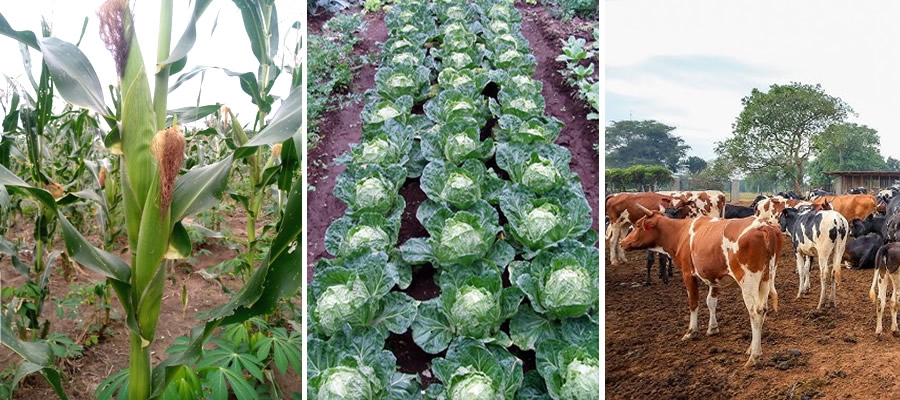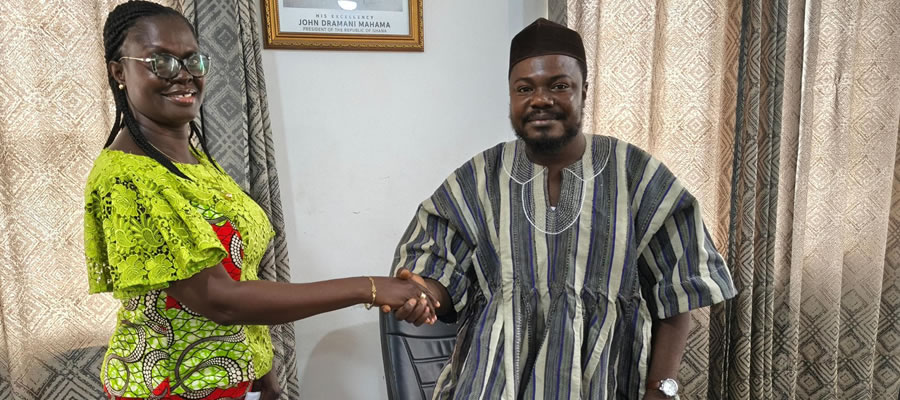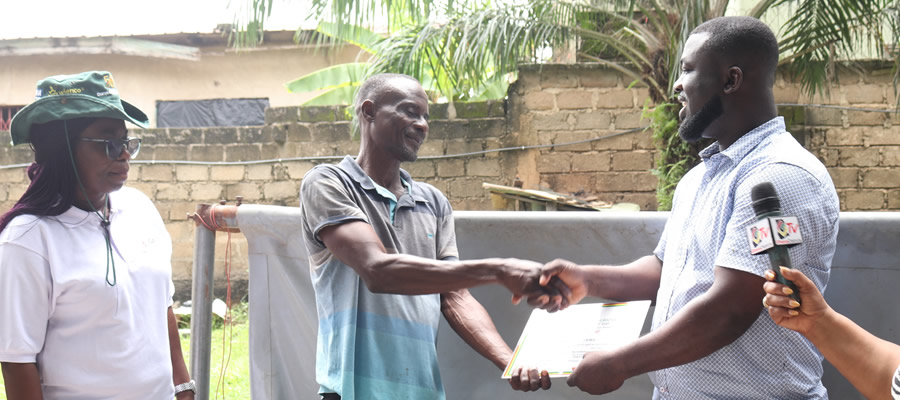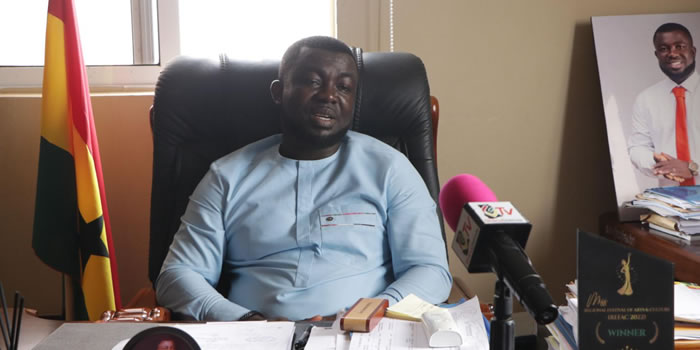

HEALTH SECTOR
Health Service Delivery
Provision of Health service is one of the major inputs to human development and has a direct linkage to growth and poverty reduction. Health Service Delivery in the Ga North Municipality is provided principally by Public (Government) Health Facility and a number of Private Health Facilities. The Municipal Health Management Team (MHMT) is responsible for health service delivery in the Municipality. The municipality is divided into 4 zones for the organization of primary health care services namely: Pokuase, Fise- Amanfrom, Ofankor and Trobu.
Curative and preventive health services are provided in these facilities and at the outreach centres. There are other care providers such as chemical shop dealers, maternity homes, traditional healers etc in the municipality.
Table 1.5 provides an overview of the number and type of health facilities available in the Municipality. As shown, most of the health needs are catered for by the Private sector. This could have implications on financial accessibility to health care.

Figure 6 shows a Map indicating the location of all Health Facilities (Public and Private) in the Municipality. As shown, most of the health facilities are concentrated in the South-Eastern part of the Municipality. This is attributed to the fact that these areas have most of the major (in terms of population) and higher-class settlements in the Municipality. Most of the private facilities are also concentrated in these areas so they can take advantage of the financial opportunities available. There is however the need to locate future Heath facilities in the emerging areas, such as the middle and northern parts to make health care available to all.


Nutrition
According to UNICEF Ghana, one child in every five in Ghana experiences stunted growth during the first thousand days of life caused by inadequate nourishment, frequent illness and an unhealthy environment. These affect the physical, social and cognitive development in children. Their brain development is negatively impacted which further affects learning at an early age, school performance and ultimately their socio-economic development. In Ghana the nutritional status of a child is measure using two criteria: Weight for Age and Age for Height. As such, and as an example a boy child of 24months exactly is expected to weigh 12kg on average whilst a girl child should weigh 10.5kg on average (this is according to WHO standard).
Figure 7, 8, 9 provide a brief highlight of the trend on Nutritional status as complied by the Municipal Health Directorate. As can be seen, the Municipality has continuously reported that over 95% of its children aged 59months and below on the average weighed at OPD have normal nutritional status as compared to below 3% and 1% for Moderate and Severe respectively.
The situation seems to compare very favorably over the National figure of 83%. However, the Municipal figure take into consideration only children aged 59months or below who were weighed at OPD. More efforts will therefore need to put in place to access the nutritional status of those (children 59months and below) who do not report at OPD. Some of the activities that have contributed to the achievements over the years have included; Health and Nutrition Education for children, Monthly assessment of Nutritional status of children 0-59months using anthropometrical measurements, Rehabilitation of malnourished children in their homes, Promotion of exclusive breastfeeding among others. It is expected that these activities and more will continue to be factored into the next Medium-Term Plan process (2022-2025) so as to completely eradicate the problem of Malnutrition



Child Protection
The 2021 population Census indicate that, 30% of the total population falls within the age of 0-14 years. The 2021 Population and Housing Census indicate that the total population 70,588 children fall within this age range. The major child protection issues facing children in the municipality among others include the following; Parental Neglect, Teenage Pregnancy, Game centers, Child Abuse, Physical Abuse, Psychological Abuse, Child Labour, Lack of parental control, Students skipping school to game centers and internet cafes, Patronizing of Game centers. Some children have also been seen engaged in hazardous activities like sand winning, stone cracking, and petty trading to fend for themselves and sometimes their parents and siblings.
The effect of Covid-19 on Child Protection issues cannot be over emphasized. For instance, during the lockdown period (which included the close down of schools) to curtail the spread of the coronavirus, some children took advantage of the period without schooling to engaged in activities such as Sand winning and Stone cracking between the period of March 2020 to January 2021. The situation was especially prominent in Domebra, Pokuase Community.
Unfortunately, there are no juvenile courts, child panels, probation homes or institutions in the District to manage juvenile issues. As a result, children caught in the net of the law are left to go free and become hardened criminals. The female adolescents also resort to immoral acts which lead to high rates of teenage pregnancy and school drop outs. The situation is even worst in the case of Orphan Children who are faced with physical, emotional and verbal abuse.
Over the years, the Social Welfare and Community Development Department of the Municipality together with other NGOs and stakeholders of the community has developed strategies called the Child Protection Programme to minimize the prevalence of these issues in 14 communities within the Municipality. This programme enabled them to conduct a survey to elicit information such as the history of the communities and other information like Religion, Economic, health, population, and spatial development in each community. They also came out with development of Action Plans to undertake, to address Child and Adolescent Protection issues identified by the community elders. In all, 14 communities Action Plans has successfully been developed.
Provision of Health service is one of the major inputs to human development and has a direct linkage to growth and poverty reduction. Health Service Delivery in the Ga North Municipality is provided principally by Public (Government) Health Facility and a number of Private Health Facilities. The Municipal Health Management Team (MHMT) is responsible for health service delivery in the Municipality. The municipality is divided into 4 zones for the organization of primary health care services namely: Pokuase, Fise- Amanfrom, Ofankor and Trobu.
Curative and preventive health services are provided in these facilities and at the outreach centres. There are other care providers such as chemical shop dealers, maternity homes, traditional healers etc in the municipality.
Table 1.5 provides an overview of the number and type of health facilities available in the Municipality. As shown, most of the health needs are catered for by the Private sector. This could have implications on financial accessibility to health care.
Figure 6 shows a Map indicating the location of all Health Facilities (Public and Private) in the Municipality. As shown, most of the health facilities are concentrated in the South-Eastern part of the Municipality. This is attributed to the fact that these areas have most of the major (in terms of population) and higher-class settlements in the Municipality. Most of the private facilities are also concentrated in these areas so they can take advantage of the financial opportunities available. There is however the need to locate future Heath facilities in the emerging areas, such as the middle and northern parts to make health care available to all.
Nutrition
According to UNICEF Ghana, one child in every five in Ghana experiences stunted growth during the first thousand days of life caused by inadequate nourishment, frequent illness and an unhealthy environment. These affect the physical, social and cognitive development in children. Their brain development is negatively impacted which further affects learning at an early age, school performance and ultimately their socio-economic development. In Ghana the nutritional status of a child is measure using two criteria: Weight for Age and Age for Height. As such, and as an example a boy child of 24months exactly is expected to weigh 12kg on average whilst a girl child should weigh 10.5kg on average (this is according to WHO standard).
Figure 7, 8, 9 provide a brief highlight of the trend on Nutritional status as complied by the Municipal Health Directorate. As can be seen, the Municipality has continuously reported that over 95% of its children aged 59months and below on the average weighed at OPD have normal nutritional status as compared to below 3% and 1% for Moderate and Severe respectively.
The situation seems to compare very favorably over the National figure of 83%. However, the Municipal figure take into consideration only children aged 59months or below who were weighed at OPD. More efforts will therefore need to put in place to access the nutritional status of those (children 59months and below) who do not report at OPD. Some of the activities that have contributed to the achievements over the years have included; Health and Nutrition Education for children, Monthly assessment of Nutritional status of children 0-59months using anthropometrical measurements, Rehabilitation of malnourished children in their homes, Promotion of exclusive breastfeeding among others. It is expected that these activities and more will continue to be factored into the next Medium-Term Plan process (2022-2025) so as to completely eradicate the problem of Malnutrition
Child Protection
The 2021 population Census indicate that, 30% of the total population falls within the age of 0-14 years. The 2021 Population and Housing Census indicate that the total population 70,588 children fall within this age range. The major child protection issues facing children in the municipality among others include the following; Parental Neglect, Teenage Pregnancy, Game centers, Child Abuse, Physical Abuse, Psychological Abuse, Child Labour, Lack of parental control, Students skipping school to game centers and internet cafes, Patronizing of Game centers. Some children have also been seen engaged in hazardous activities like sand winning, stone cracking, and petty trading to fend for themselves and sometimes their parents and siblings.
The effect of Covid-19 on Child Protection issues cannot be over emphasized. For instance, during the lockdown period (which included the close down of schools) to curtail the spread of the coronavirus, some children took advantage of the period without schooling to engaged in activities such as Sand winning and Stone cracking between the period of March 2020 to January 2021. The situation was especially prominent in Domebra, Pokuase Community.
Unfortunately, there are no juvenile courts, child panels, probation homes or institutions in the District to manage juvenile issues. As a result, children caught in the net of the law are left to go free and become hardened criminals. The female adolescents also resort to immoral acts which lead to high rates of teenage pregnancy and school drop outs. The situation is even worst in the case of Orphan Children who are faced with physical, emotional and verbal abuse.
Over the years, the Social Welfare and Community Development Department of the Municipality together with other NGOs and stakeholders of the community has developed strategies called the Child Protection Programme to minimize the prevalence of these issues in 14 communities within the Municipality. This programme enabled them to conduct a survey to elicit information such as the history of the communities and other information like Religion, Economic, health, population, and spatial development in each community. They also came out with development of Action Plans to undertake, to address Child and Adolescent Protection issues identified by the community elders. In all, 14 communities Action Plans has successfully been developed.
Date Created : 2/13/2025 12:00:00 AM











 facebook
facebook
 twitter
twitter
 Youtube
Youtube
 +233 593 831 280
+233 593 831 280 0800 430 430
0800 430 430 GPS: GE-231-4383
GPS: GE-231-4383 info@ghanadistricts.com
info@ghanadistricts.com Box GP1044, Accra, Ghana
Box GP1044, Accra, Ghana